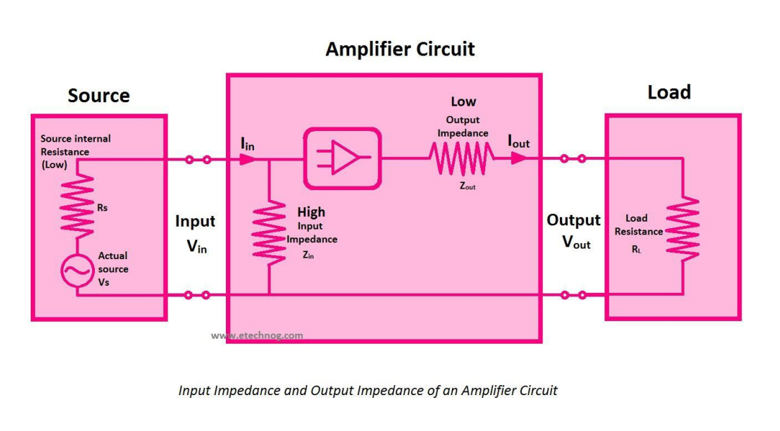Input impedance and output impedance

In the field of electronic circuits, input impedance and output impedance are two extremely critical concepts that have a profound impact on circuit performance, signal transmission, and system matching. Although both involve the electrical property of impedance, their roles, characteristics, and functions in the circuit are significantly different.
1. Definition and basic concepts
Input impedance is measured by adding a voltage source U to the input end and testing the current I at the input end. Then the input impedance Rin=U/I. We can understand it as the equivalent impedance presented by the input end of the circuit. For a circuit or device, when an external signal source inputs a signal to it, the impedance from the signal source to the input end of the circuit is the input impedance. It reflects the circuit’s “acceptance capacity” for the input signal.
Input impedance formula:
Zin = Vin/Iin
Zin – input impedance, Vin – input voltage, Iin – input current;
Output impedance is also called internal resistance, and is the voltage U/I at the output end measured without a load. Therefore, the smaller Ro is, the better, because the smaller the internal resistance, the smaller the self-loss and the stronger the load capacity. Taking a power amplifier as an example, its output impedance will affect the power obtained by the connected speaker and other loads and the quality of the signal.
2. Numerical characteristics and influencing factors
The numerical range of input impedance is wide, and its value depends on the specific structure of the circuit and the parameters of the components. Generally speaking, a circuit with high input impedance has a small load effect on the signal source. For example, an amplifier circuit using a field effect tube as the input stage can have an input impedance of several megohms or even higher due to the high input impedance characteristics of the field effect tube. In this way, when connected to the signal source, almost no current is drawn from the signal source, thereby avoiding a significant impact on the amplitude and waveform of the signal output from the signal source.
The value of output impedance is usually relatively low. It is mainly determined by the output stage components, wiring resistance and other related factors inside the circuit. For example, the output impedance of a common audio power amplifier may be between a few Ω and tens of Ω. The lower the output impedance, the more effectively the signal power generated inside the circuit can be transmitted to the load when the load is connected, reducing the power loss at the output end.
3. Impact on circuit performance
For input impedance, a higher input impedance helps to improve the sensitivity and anti-interference ability of the circuit. In a sensor circuit with a weak signal, a high input impedance can make the tiny signal output by the sensor be diverted as little as possible by the circuit input part, thereby ensuring that the signal can enter the circuit completely for subsequent processing. At the same time, high input impedance can also reduce the possibility of external interference signals coupling into the circuit through the input loop, because the current in the high impedance loop is small, and it is difficult for the interference signal to form an effective interference current.
The output impedance has a decisive influence on the load capacity of the circuit. When the output impedance does not match the load impedance, problems such as signal reflection and low power transmission efficiency will occur. For example, in a radio frequency circuit, if the output impedance does not match the impedance of the antenna, a large amount of radio frequency signals will be reflected back to the transmitter, which not only reduces the transmission efficiency, but also may cause damage to the transmitter. When the output impedance matches the load impedance, that is, when the load impedance is equal to the output impedance, maximum power transmission can be achieved, which is particularly important in circuits such as power amplifiers. For more information, visit Tulis Cerita, Lis Bloguer, Ikonisch Welt, Tumblr Magazine, baddiehub, London Zine, and Fanzine Blog.



